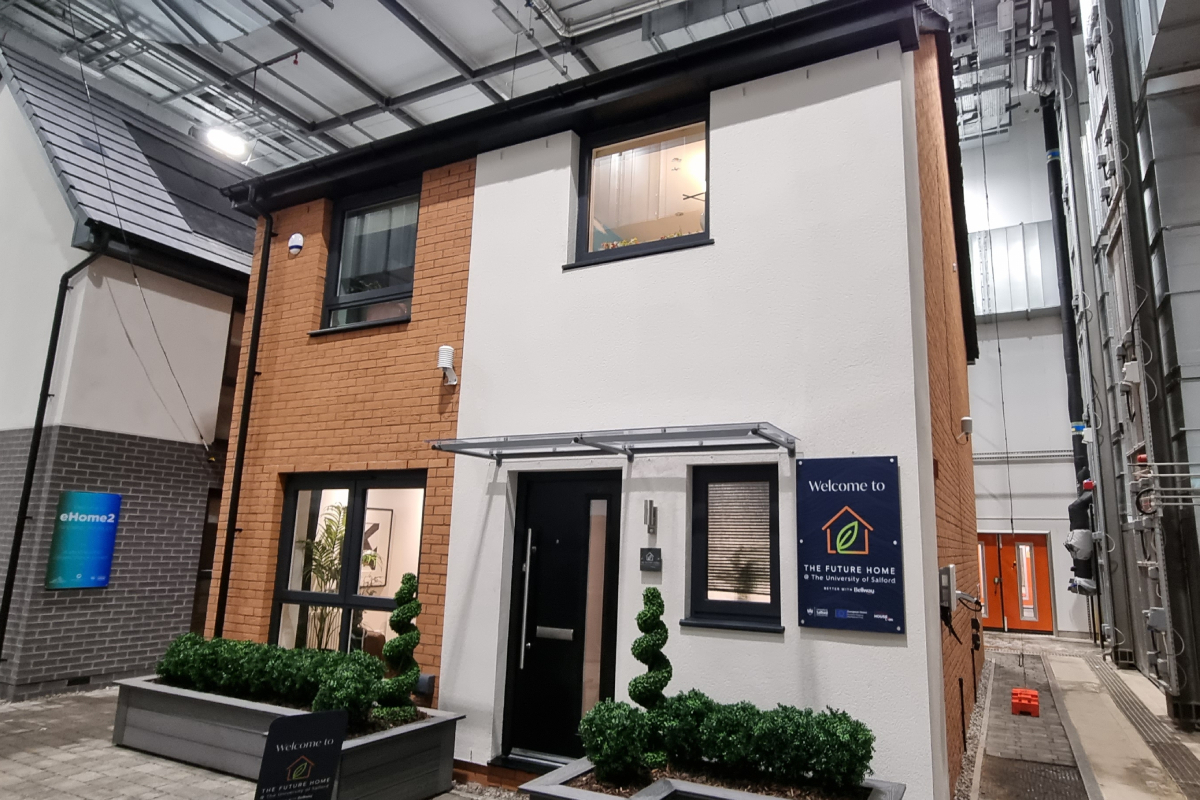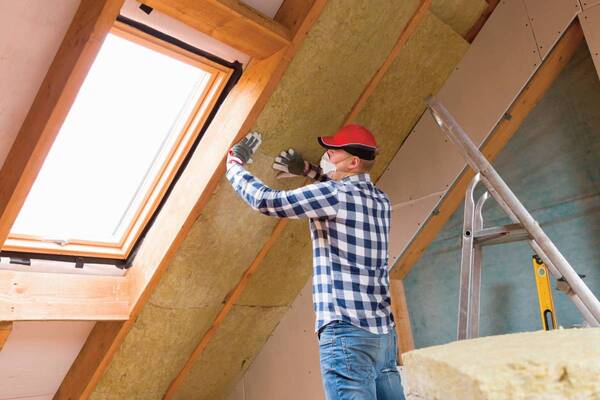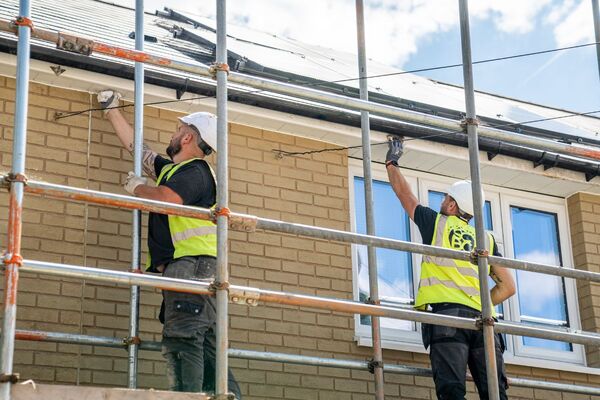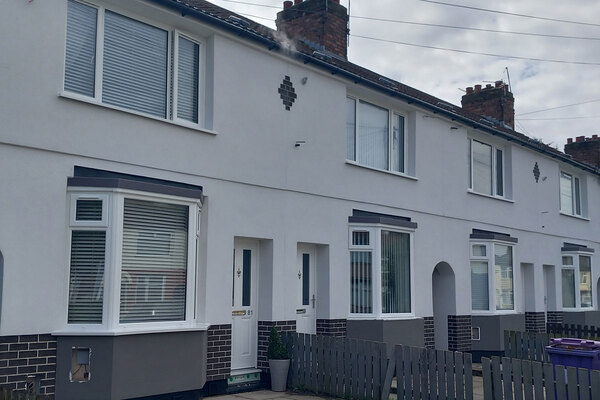Infrared heating – a complementary green technology
The journey to net zero won’t be won by any single technology. Success will come from using the right tool for the job, says Ambion Heating
As the UK approaches closer to net zero, the pressure to decarbonise heat is intensifying. For housing providers and developers, the challenge is complex: how to deliver sustainable, compliant heating solutions that work in smaller homes where space is tight, budgets are limited and give occupants both comfort and control?
Technologies like heat pumps and district heating play a key role, but they’re not always the right fit – especially for properties such as flats and other small homes. That’s where Ambion heating comes in.
While other electrical heating systems are more prominent, infrared is a quiet achiever: a simple technology with serious potential. Ambion has led the way in infrared heating, designed as a leading low-carbon heating choice, specifically for flats and small homes where space-saving, affordability and ease of installation are paramount. Backed by independent research from the Energy House 2.0 facility, our system delivers real-world comfort and control while helping to cut emissions and energy bills.
Why infrared is a true low-carbon alternative to traditional heating
Unlike traditional convection heating, which works by warming air that then circulates, infrared heat warms the surfaces and fabric of a room directly, much like the sun on a spring morning. This type of radiant heat achieves a comfortable environment, as surfaces retain heat for longer and re-emit it slowly back into the room. It’s a highly efficient method of heating, particularly when combined with Ambion’s intelligent control panel to avoid overheating and unnecessary energy use.
Infrared systems don’t require water, pumps or moving parts, so no maintenance is required. The Ambion system is designed to make the most of this simplicity. With precise temperature control and room-by-room zoning, residents can heat exactly where and when they need – and only pay for the energy they use. It’s a direct, responsive approach that aligns with low-carbon design principles and future energy efficiency regulations.
Tested and proven: Results from Energy House 2.0
Sustainability claims mean little without evidence, which is why independent testing matters. At the University of Salford’s Energy House 2.0 research facility, the Ambion infrared system underwent extreme temperature trials to evaluate its thermal performance. The results were clear: the system achieved the fastest heat-up times, with high levels of accuracy in reaching and maintaining target temperatures, and consistent warmth throughout the room. The tests also confirmed the absence of cold spots – a common issue with older electric heating.
The system provided leading levels of comfort where occupants benefit from the consistent radiant warmth emitted by the Ambion system, felt directly by the body rather than indirectly via the air. Each panel is controlled individually via a simple, intuitive control panel, empowering the user to fine-tune each room to suit their needs – a feature often missing from traditional electric or central heating systems.
A practical fit for flats and small homes
One of the major barriers to deploying low-carbon heating at scale is space. Flats and small homes, whether newly built or part of the existing housing stock, often don’t have the internal or external room to accommodate air source heat pumps, hot water cylinders or the associated pipework. This is where Ambion can help.
Ambion’s slimline panels are wall-mounted, unobtrusive and require no boiler, cylinder or outdoor unit. Installation is straightforward and fast, carried out by any qualified electrician without specialist training. For retrofit projects, the lack of disruption to the building fabric is a major plus, particularly in occupied homes.
Affordability is another key strength. Upfront costs for an Ambion system are typically lower than for heat pumps or even newer-generation storage heaters. Ongoing running costs are also competitive, averaging £35 to £45 a month for a two-bedroom flat, which can be future reduced with solar PV and flexible tariffs. The combination of low capex and opex is particularly attractive in social housing, where funding constraints and resident affordability must be balanced with regulatory requirements and carbon goals.
Built for smart energy systems
Ambion’s heating system also complements the technologies reshaping our wider energy landscape. As solar PV becomes more prevalent in housing developments and as time-of-use tariffs reward flexibility, Ambion’s system is designed to make use of both. Built-in algorithms spread energy demand evenly across 24 hours, helping to avoid peak energy times that drive up costs.
For landlords and developers, data insights offer another layer of value. The Ambion system provides visibility of energy use and comfort levels across rooms, flats and multi-occupancy buildings, with data available locally on the in-home panel or remotely via a dashboard. This helps drive operational efficiencies, support engagement with residents and simplify compliance reporting.
More than just warmth – a system that supports wellbeing and compliance
Infrared heating isn’t just about energy and emissions. It contributes meaningfully to indoor air quality and household wellbeing. By gently warming the fabric of the home, rather than simply circulating air, the system reduces the risk of condensation on cold surfaces, helping to combat damp and mould. This is particularly important in older buildings or homes and where ventilation is limited, aligning with social housing efforts to provide healthy homes.
It also supports housing providers in meeting future regulatory requirements. Whether it’s EPC ratings or the Future Homes Standard, the Ambion system integrates seamlessly with other efficiency measures – from solar panels to smart water heating – helping to build compliant, comfortable homes without unnecessary complexity or cost.
A complementary technology for a decarbonised future
The journey to net zero won’t be won by any single technology, and nor should it be. Success will come from using the right tool for the job, in the right setting. In flats and small homes, infrared heating from Ambion is that tool: low carbon, cost-effective and simple to install.
As specialists in working with flats and small homes, Ambion offers not just the technology but the expertise and support to make it work, whether you’re retrofitting a tower block or delivering new affordable housing at scale. Proven performance, low running costs and a future-ready design make it an ideal partner to other low-carbon technologies, and it’s already part of the future low-carbon heating mix.






